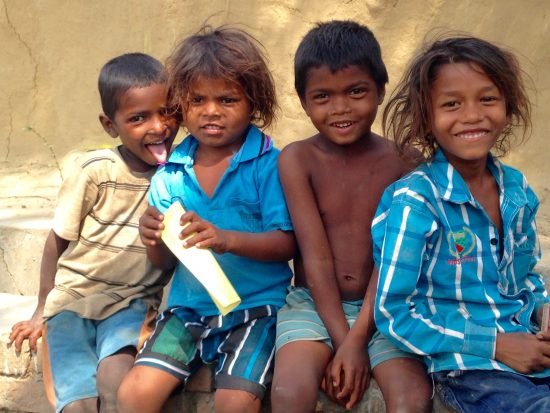We began our research in several villages around Bodh Gaya by interviewing the adults about what they felt was most needed. While education was an often-given answer, it was clear that there are health (both mental and physical), social stigmas and infrastructure issues that would need to be addressed as well, in order for education to have any real impact. As a result of this research, we decided to focus our initial efforts on just one village, Bataspur, in order to try a holistic approach. On the outskirts of Bataspur, there is a community of around 150 people of the Dalit caste, and their isolation has caused widespread health and other poor living conditions.
Although there is a government school within 500 meters of their huts, very few of the Dalit children are attending, and for those few that do attend, there is only one teacher for 50 children of all ages, and the Dalit children have been discriminated against and poorly treated when they attend. Also, the parents are saying they aren’t seeing any advantage to their children going to school. There are no jobs, no proper infrastructure of transportation and ultimately no hope for a different future. During monsoon, Bataspur becomes even more isolated without proper roads to access the resources on the other side of the river. Luckily, the new bridge being built near the village will hopefully give them better access to goods and services throughout the year.
Also, there is a huge gender gap in India. While great strides have been made thus far, girls are still being married at very young ages, and suffering from health issues caused by giving birth too young as well as other poverty-related illnesses. We hope to begin to make a difference with these issues by helping young girls develop a passion for education and a hope for a better way of life.

